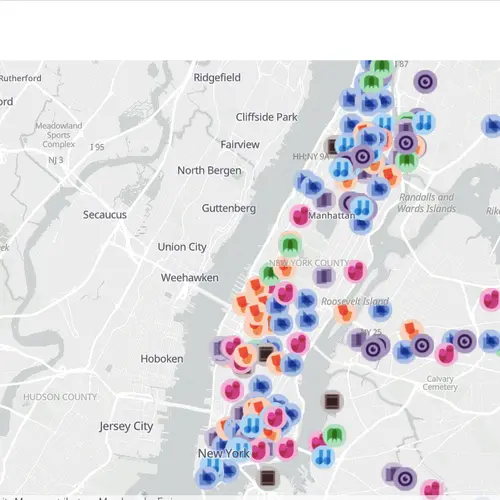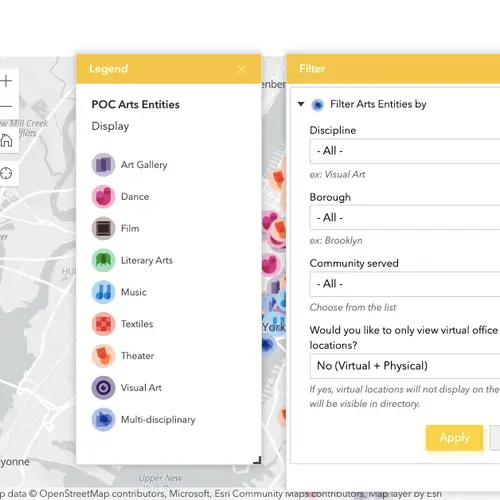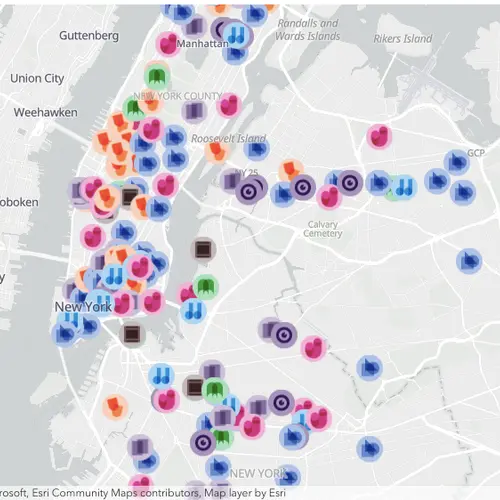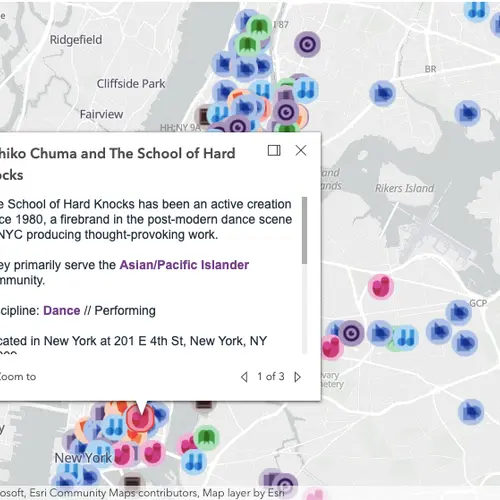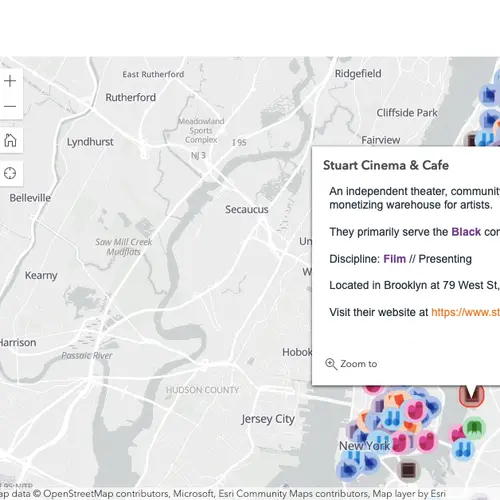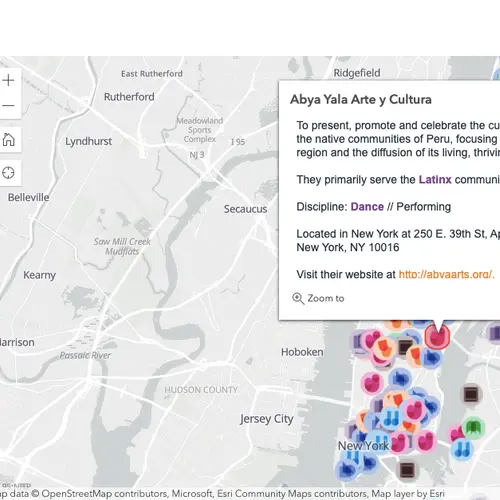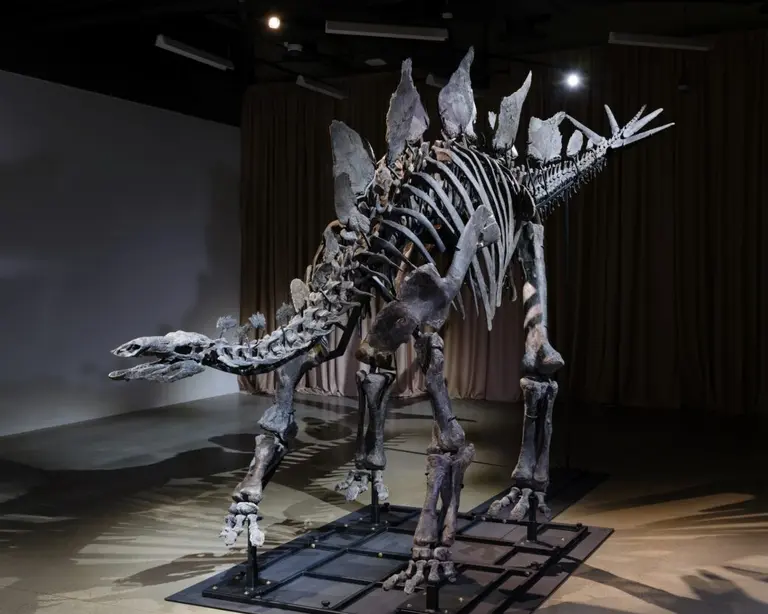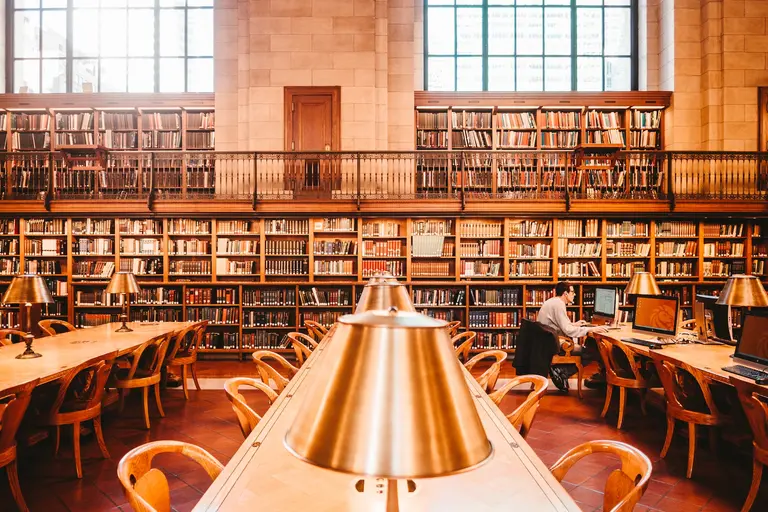New interactive map highlights 400+ arts organizations led by people of color in NYC
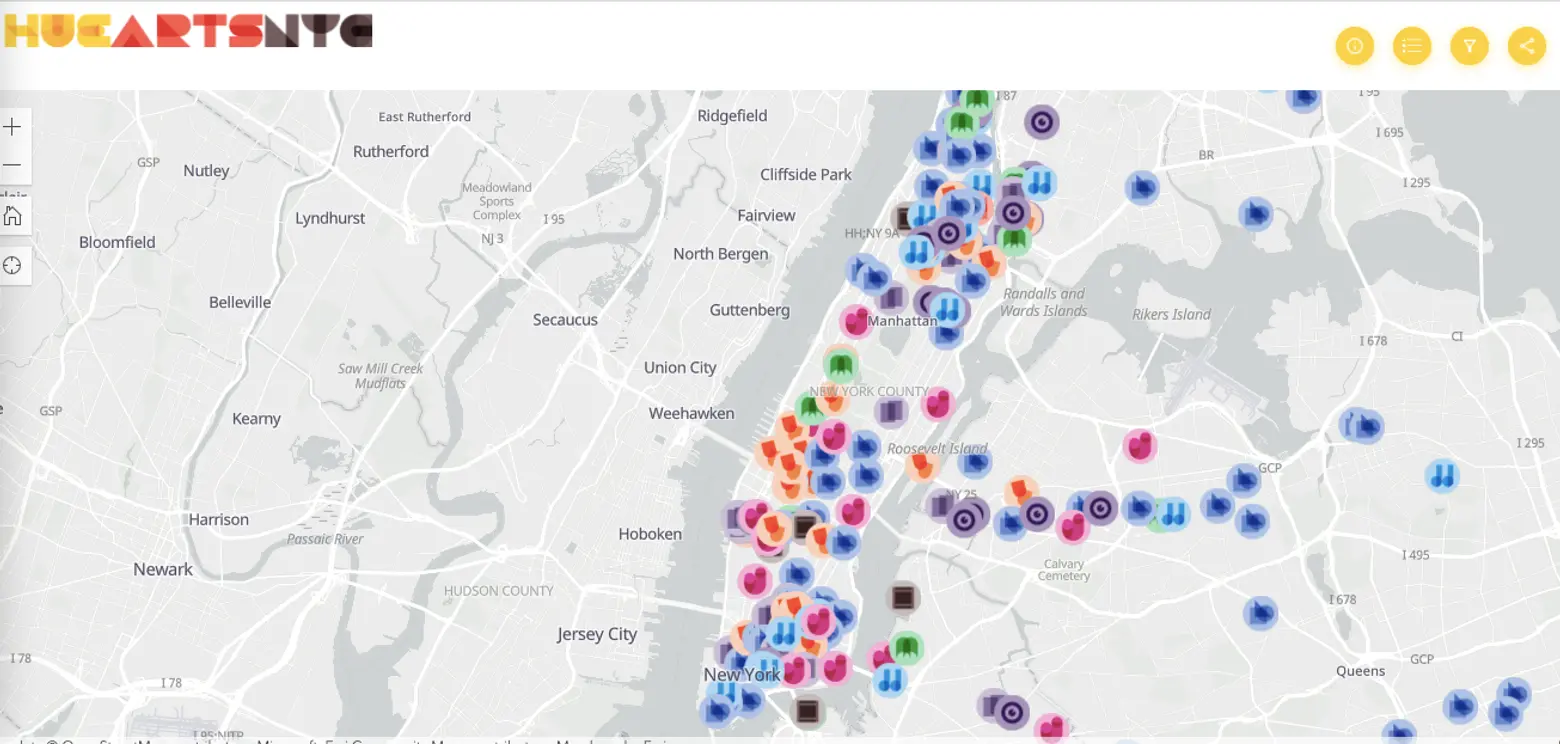
Screenshot of Map courtesy of HueArts NYC
HueArts NYC, a coalition of over 400 New York City arts groups founded, led, and serving Black, Latinx, Indigenous, Asian, Pacific Islander, Middle Eastern, and all People of Color (POC), launched an interactive digital map and directory of the city’s POC-led arts and culture landscape. The map accompanies a report with key findings and recommendations for the city’s policymakers and arts donors to address the city’s cultural equity gap, including a call to create a $100 million fund to support POC-led arts groups.
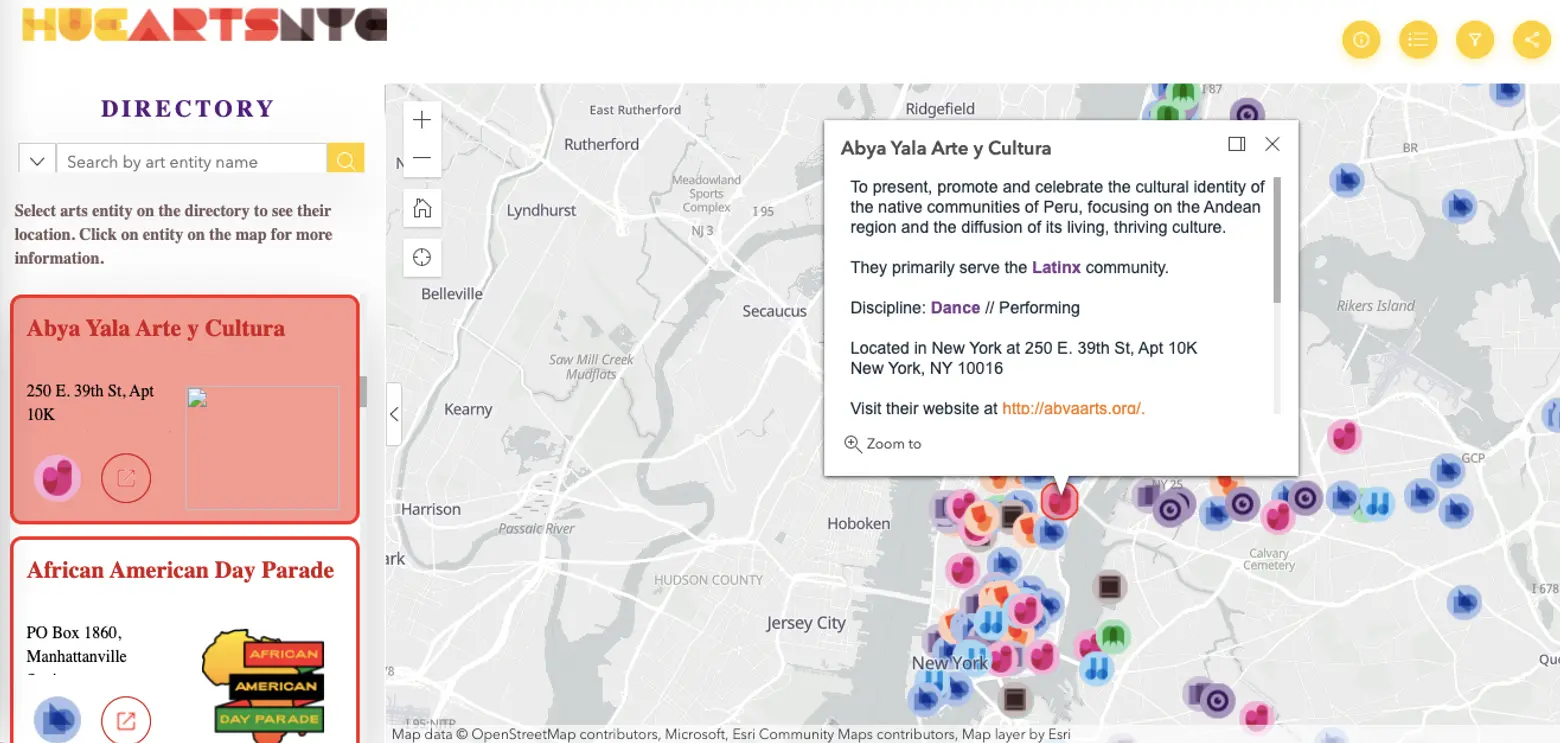
The map and “brown paper” report, titled “Mapping a Future for Arts Entities Founded and led by Black, Indigenous, Latinx, Asian, Pacific Islander, Middle Eastern, and All People of Color in New York City,” are the culmination of many surveys, interviews, and conversations with POC arts community leaders. The report highlights the unique contributions of and the many challenges faced by POC arts organizations.
“Having this data compiled and visualized in this way is a critical starting point for the city to understand our needs and for our communities to connect with and support each other,” Rasmia Kirmani, interim executive director at Hester Street, a project partner that designed the map and directory, said in a statement.
“This is the first time we are organizing together, across all five boroughs, and utilizing technology to move the conversation forward in a practical and tangible way.”
The report includes six key findings and recommendations, which were also shared in an open letter to Mayor Eric Adams asking that they be addressed in his future plans involving NYC arts and culture.
Key findings of the HueArts NYC brown paper include:
- POC arts entities are deeply embedded in their communities and often relied upon to provide more than just arts programming.
- POC arts entities are often connected to a sense of place and neighborhood, but rarely have a truly stable space of their own.
- POC arts entities are resourceful and resilient in the face of a long history of structural racism, chronic under-investment, and limited financial support.
- The dearth of data and metrics on POC arts entities in NYC is significant and remarkable, creating barriers to truly comprehensive field knowledge, visibility, and impact.
- Increased staff capacity and ability to support artists are urgent and fundamental priorities for POC arts entities.
- POC arts entities face extra layers of challenges to secure adequate funding in comparison to predominantly white-led arts institutions.
The report’s six recommendations for the city’s policymakers to address equity in arts and culture are:
- Create a designated $100M fund for POC arts and cultural entities
- Establish a substantive baseline budget line for POC arts in the City’s annual budget
- Invest in place as a long-term strategy for POC art stability and thriveability
- Foster career- and community-building among arts professionals at POC arts entities
- Consistently collect data that further knowledge and promotes equity in the arts
- Invest in higher and sustained visibility for POC arts entities in NYC
The digital map and directory include over 400 POC-led arts groups throughout the city. NYC arts organizations are invited to submit their information to be included in the map, which will be updated bi-annually.
“So often we hear that NYC’s policymakers and philanthropic leaders can’t find or are unfamiliar with Black, Latinx, Indigenous, Asian, Pacific Islander, Middle Eastern, and all People of Color arts organizations when it’s time to make critical decisions that impact our present and future. HueArts NYC changes that,” Stephanie A. Johnson-Cunningham, executive director of Museum Hue, also a HueArts NYC project partner, said.
“Now, we have a platform that centers our arts organizations contributions to the city’s arts landscape and creative economy, a map of where we are in every community, and clear recommendations to address our needs. This will help our city’s political, philanthropic, and cultural leaders increase collaboration and financial support for our arts organizations and will have a measurable impact on neighborhoods in all five boroughs.”
RELATED:
- 600 affordable homes and new Afro-Latin Music and Arts Center coming to East Harlem
- How to celebrate Black History Month 2022 in New York City
- This map shows the diversity of NYC’s veterans in every neighborhood
- ‘Arts Revival’ program to include 300+ outdoor pop-up performances and events around New York
